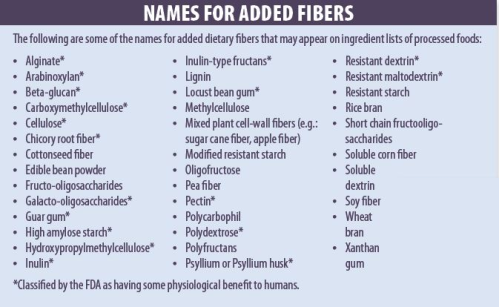In a lot of ways fiber reminds me of what Mark Twain said about the weather. “Everybody talks about it, but nobody does anything about it.” So, here is an excellent rundown on fiber from the Tufts Health & Nutrition Letter.
It is recommended that adults consume between 25 and 30 grams of dietary fiber a day. The average American currently gets about half that amount. According to the latest Dietary Guidelines for Americans, dietary fiber is a “nutrient of public health concern,” meaning this low level of intake could actually be detrimental to our health. So, it’s potentially good news that food manufacturers are adding fiber to processed foods. But is that fiber as good for our health as fiber found naturally in fruits, vegetables, nuts, legumes, and whole grains?

Photo by Kaboompics .com on Pexels.com
Health Benefits of Fiber. According to a research review co-authored by Nicola McKeown, PhD, a scientist with Tufts’ Nutritional Epidemiology program and an associate professor at the Friedman School, there is reproducible evidence that dietary fiber found naturally in foods has a role in lowering cholesterol, improving glycemic control, and preventing constipation. And fiber may have more health benefits as well. “Research in this field is continually expanding,” says McKeown. “We’ve only begun to consider things like how the gut microbiota utilize different types of dietary fibers to potentially impact health.”
Dietaryfiber, also referred to as non-digestible carbohydrate, is the portion ofa plantfood that cannot be broken down by digestive enzymes. There are numerous substances that fit this definition, and they do not all behave the same way in the body. “Fibers have different effects because of inherent properties—solubility, viscosity, and fermentability,” says McKeown. The level of each of these properties determines what health effects a particular fiber will have in the human body. For example, both soluble fibers like those in oats and insoluble fibers like wheat bran are good for regularity (although through different mechanisms), but only viscous soluble fibers help lower cholesterol levels.
Added Fibers. The “Dietary Fiber” listed on Nutrition Facts labels is a total of fibers naturally present in food ingredients (intrinsic fibers), plus any fibers that are added. “There are actually three categories of dietary fiber that add up to the number on that label,” says McKeown. “Intrinsic (natural and intact); isolated/added fibers; and synthetic fibers.” Some fibers are added to meet health-conscious consumers’ desire for high fiber foods, but others are added as thickening agents or stabilizers, or for other processing-related purposes. “Many consumers are not aware that some of these added fibers may not have the same physiological health benefits as fibers found naturally in plant foods,” says McKeown. For example, research studies have suggested that the added fibers psyllium and beta-glucan are effective at reducing cholesterol, but inulin (sometimes called chicory root) appears to have no effect on cholesterol levels (although it may have some benefit as a prebiotic).
Unlike natural fibers, added fibers must be included on ingredient lists. Look for ingredients that include words like fiber, gum, and starch, and specific names of commonly added fibers (see “Names for Added Fibers” box on below).

The FDA recently reviewed the scientific literature to determine which added or isolated fibers have a physiological health benefit. The review looked for an association in humans between an isolated or synthetic fiber and at least one of the following:
-Lower blood glucose and cholesterol levels
-Lower blood pressure
-Increased frequency of bowel movements
-Increased absorption of minerals in the intestinal tract
-Reduced energy intake
The FDA review identified the following added fibers as meeting this definition of dietary fiber: beta-glucan, psyllium husk, cellulose, guar gum, pectin, locust bean gum, and hydroxypropyl-methylcellulose. Further, based on a review of the science, the FDA intends to propose eight other non-digestible carbohydrates be added to the definition of dietary fiber, including inulin.
Additional Considerations. Even if the natural and added fibers in processed foods have been shown to have health benefits, the Dietary Fiber number on the label is not enough of a reason to choose a particular processed food. “Consumers need to consider not only the dietary fiber content of the food, but also how much added sugar or sodium may be in the product,” says McKeown. “In many foods, such as cookies or ice cream, these fibers are added as bulking agents, stabilizers, or thickeners. These sweet treats and other processed foods are not equivalent to naturally fiber-rich foods like fruit, not only in fiber content, but also with respect to other nutrients.”
Given that a majority of Americans fail to meet dietary fiber intake recommendations, incorporating products supplemented with beneficial added fibers can help increase fiber intake. But consumers should be aware that no amount of added fiber can make up for the potentially low content of beneficial nutrients and the possible negative health effects of things like added sugars and high levels of sodium that come with many processed foods.








Excellent article. Well done that man!
LikeLike
I agree that natural is the best! I have eaten well for years. However, in more recent years I understand what I eat more clearly. By eating natural fiber, making my own food from individual ingredients (rather than prepackaged) I have seen very specific digestion improvements. Huge difference!
LikeLike
Thanks very much for sharing that, Lisa. It’s wonderful to see good ideas work themselves out positively in our lives.
LikeLiked by 1 person
Knowledge is power.
LikeLiked by 1 person